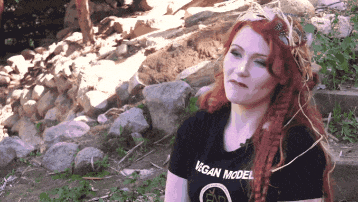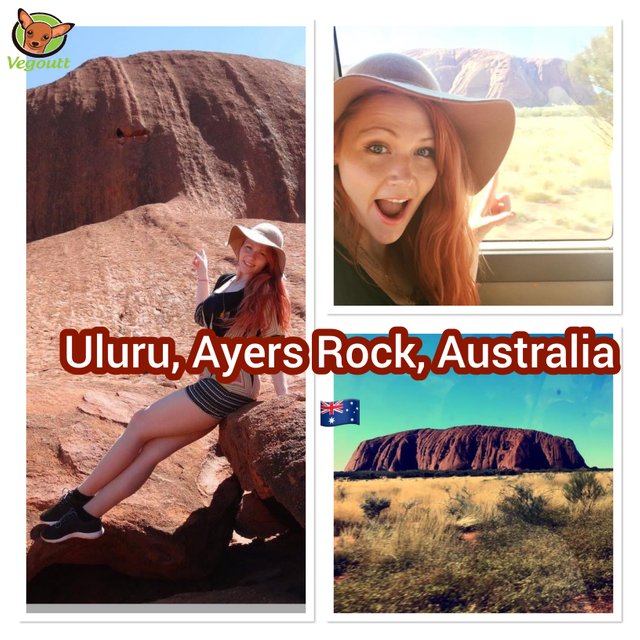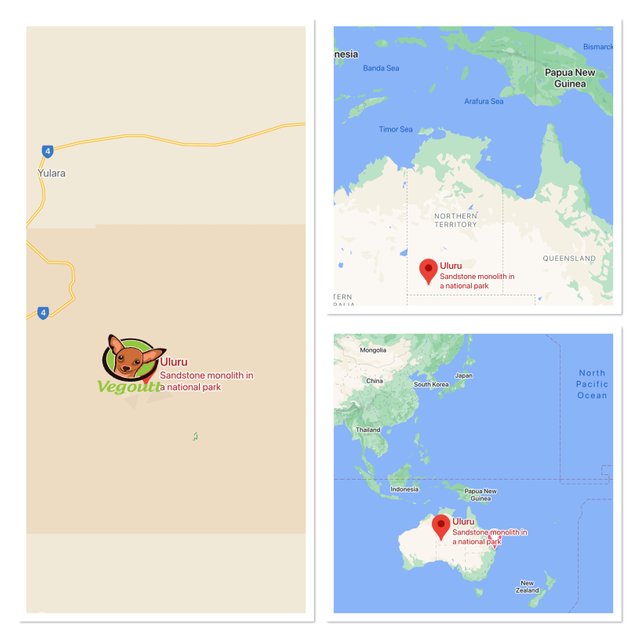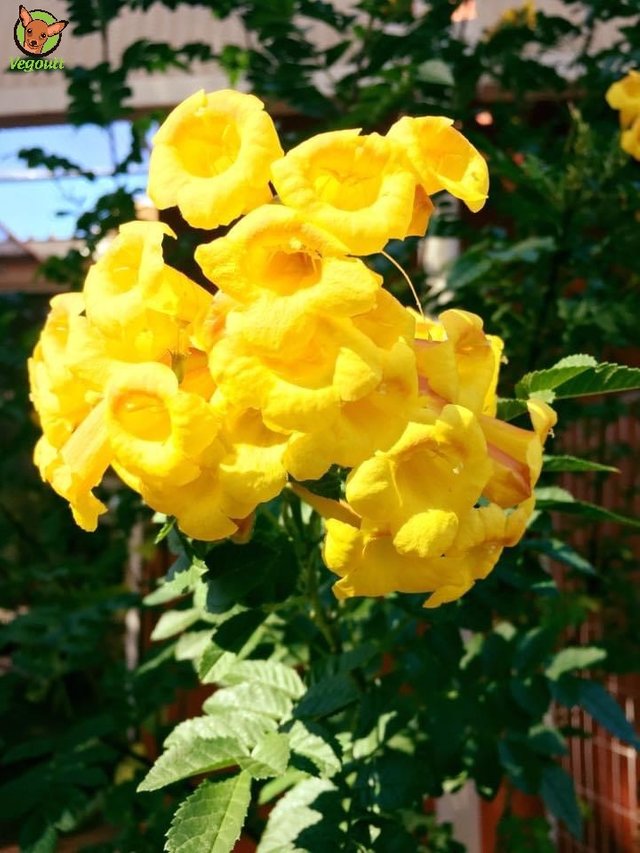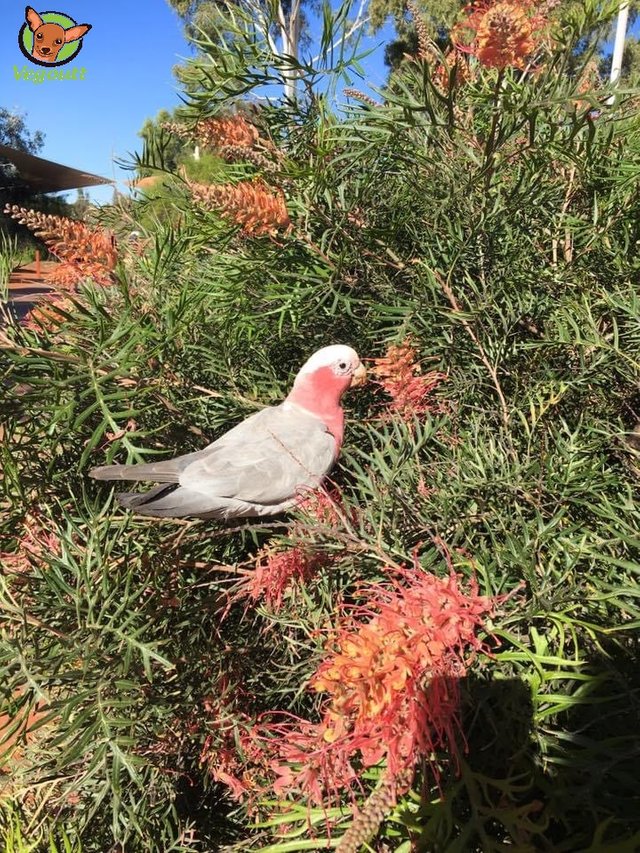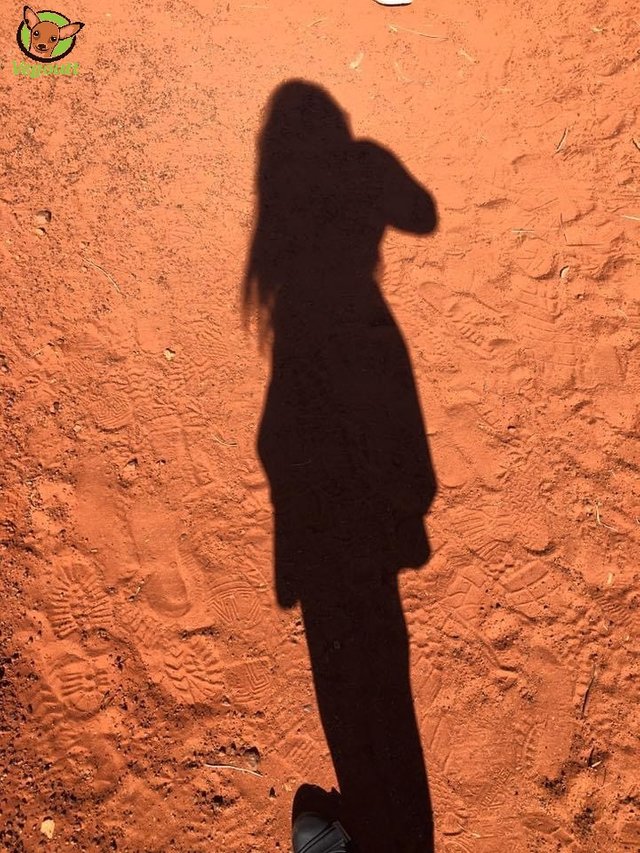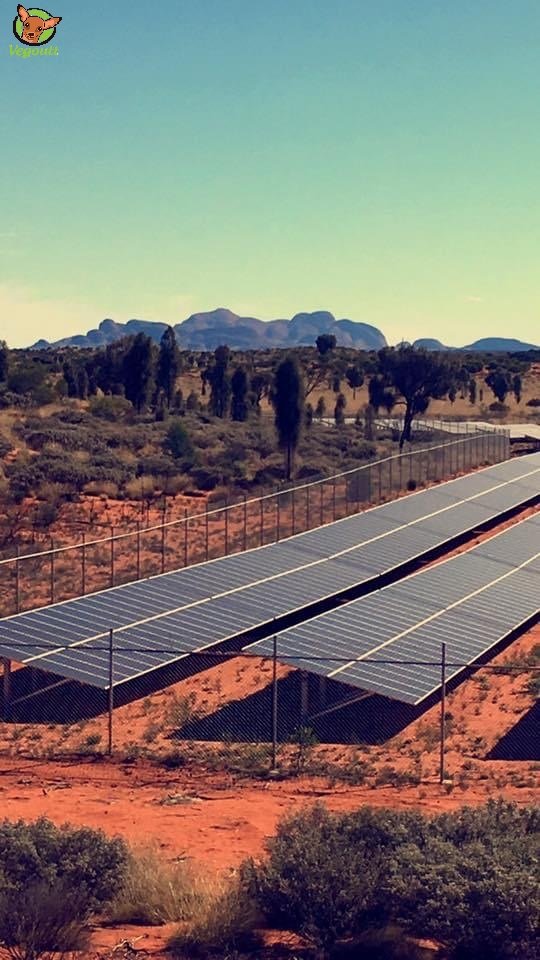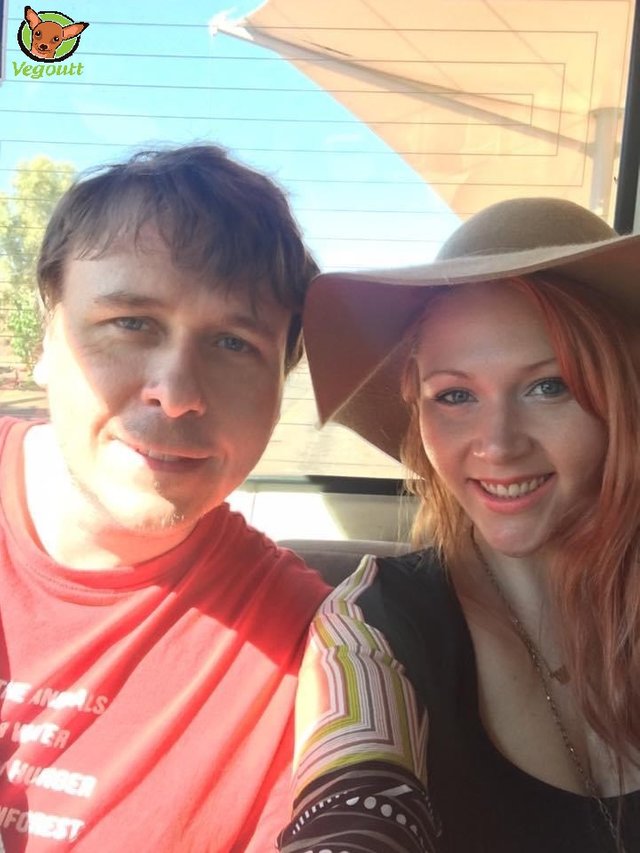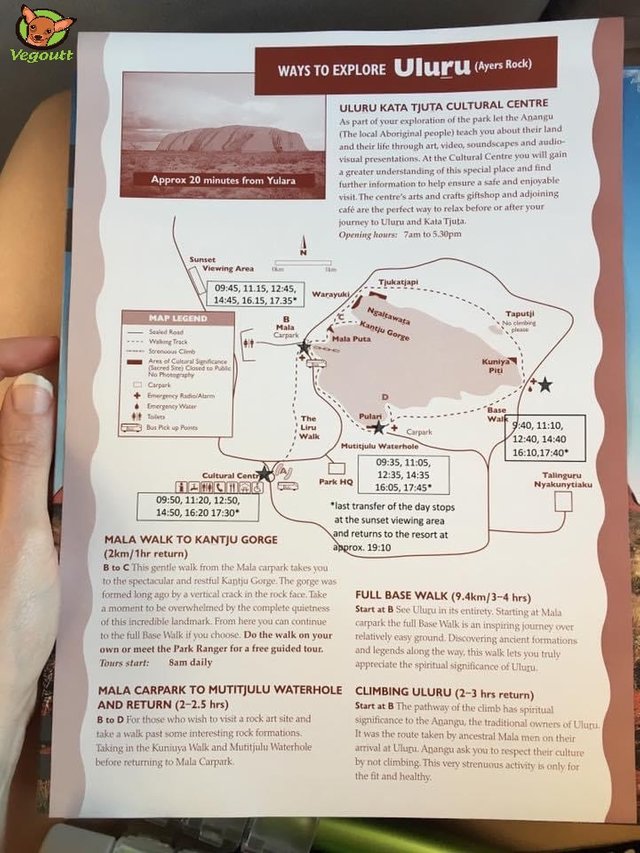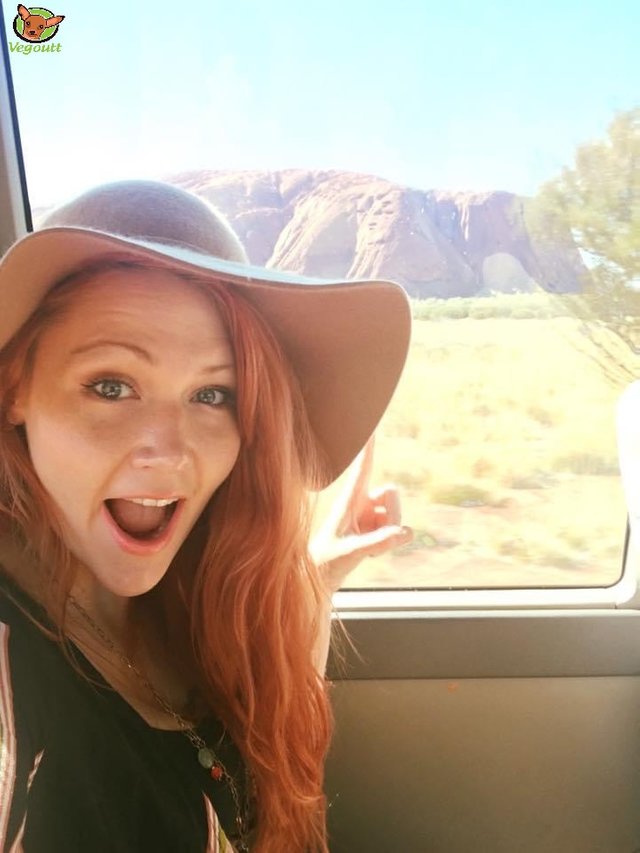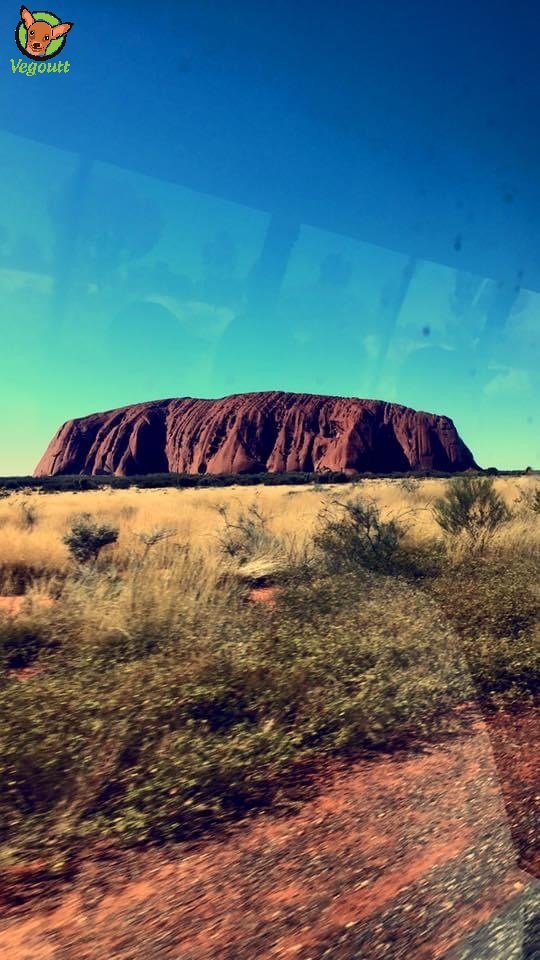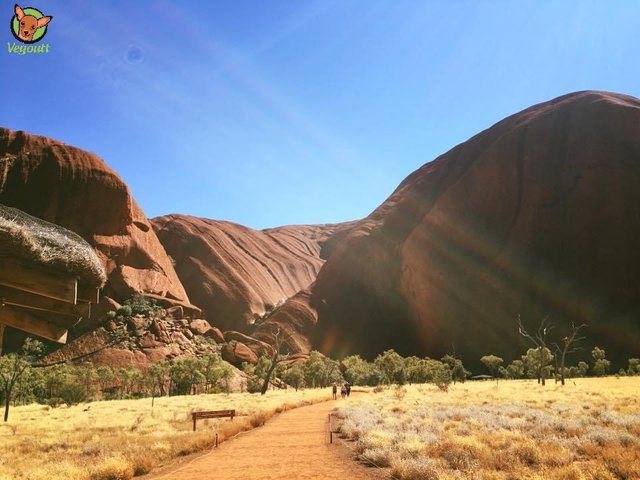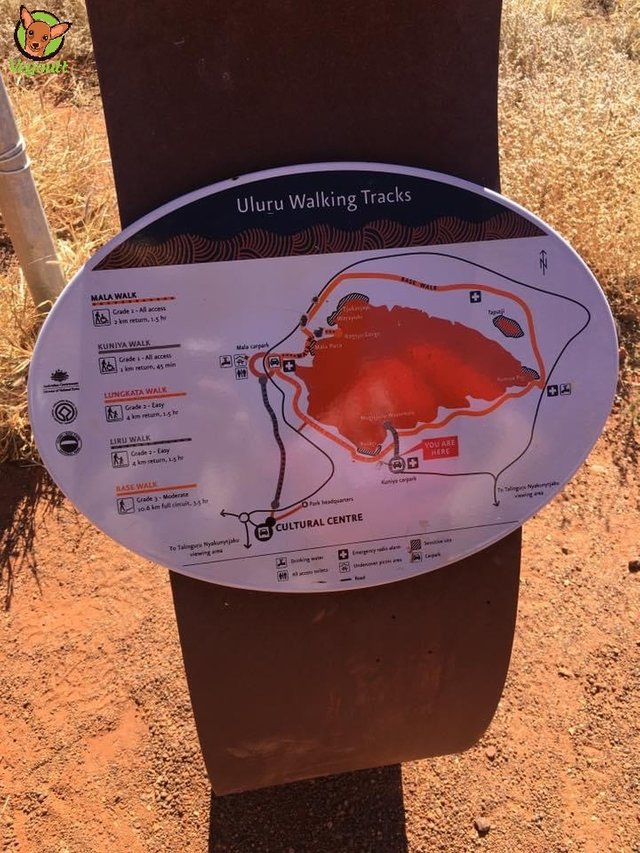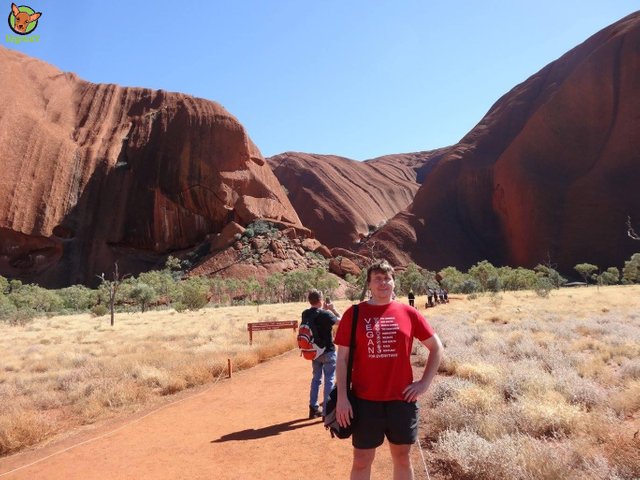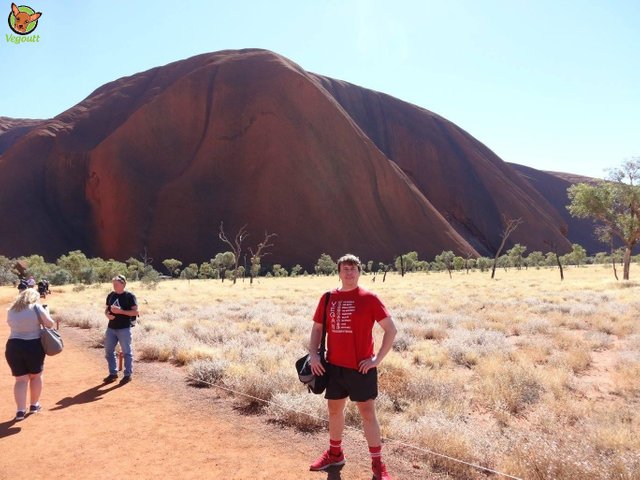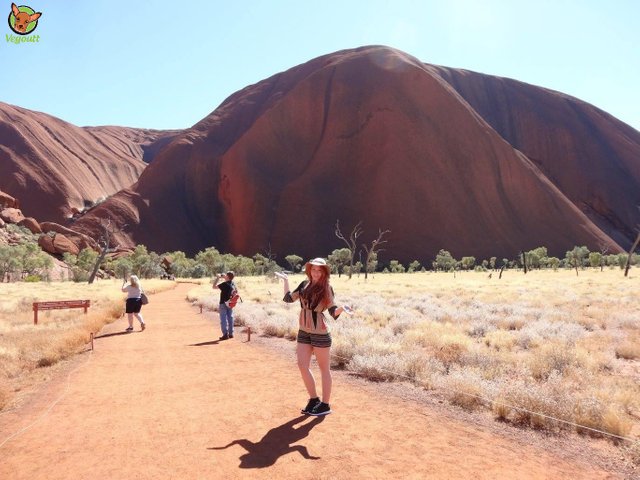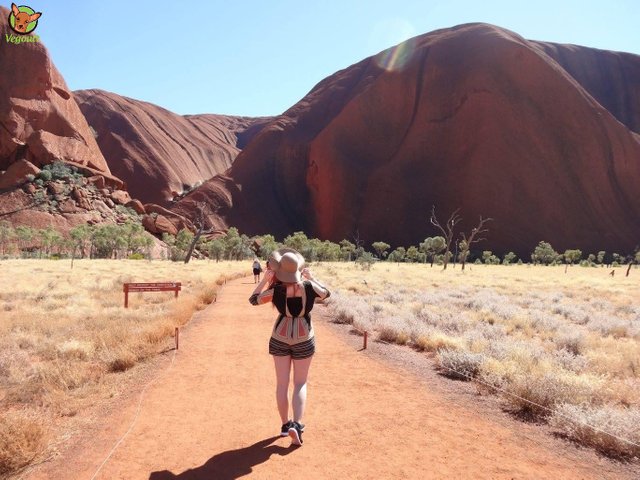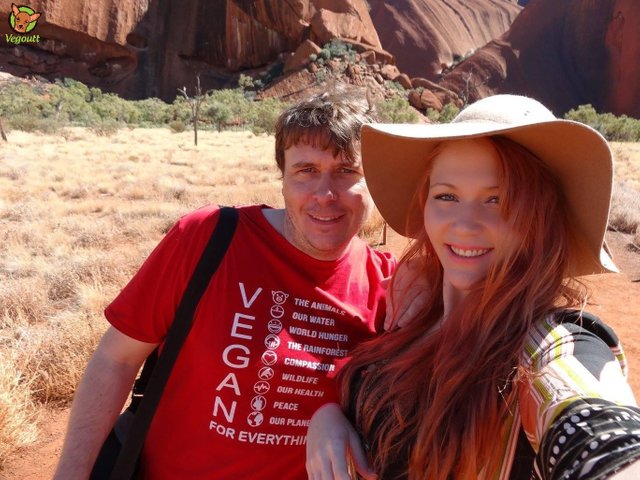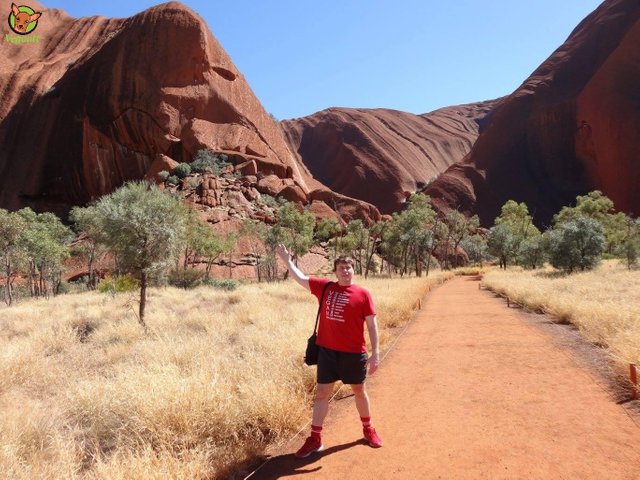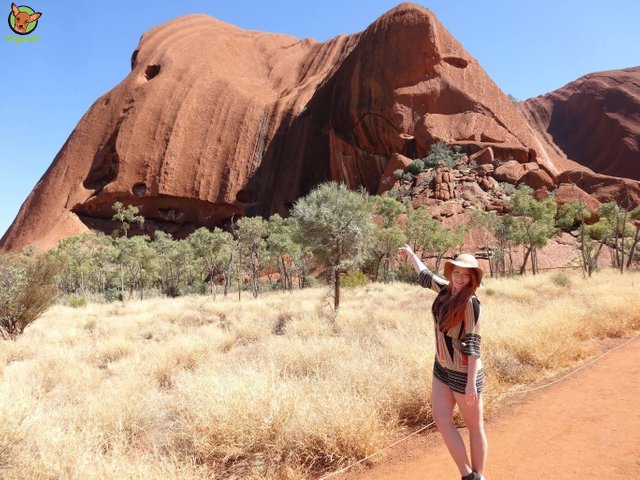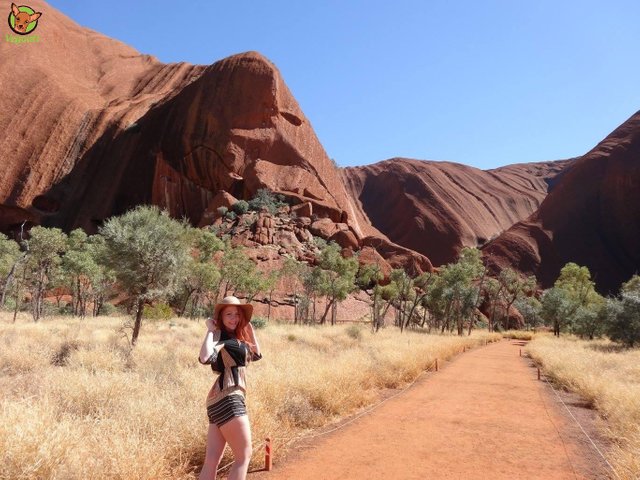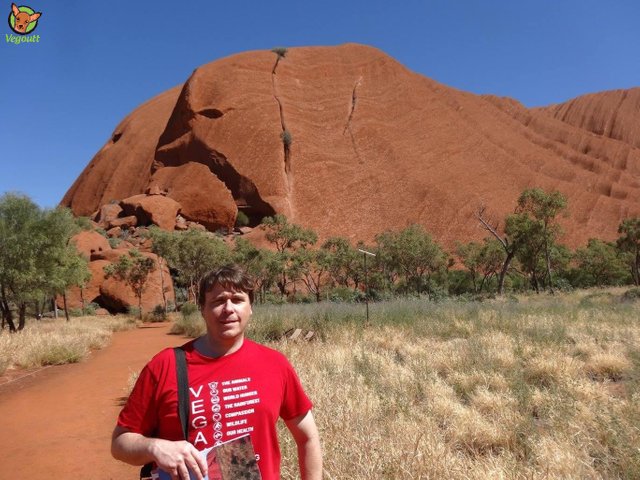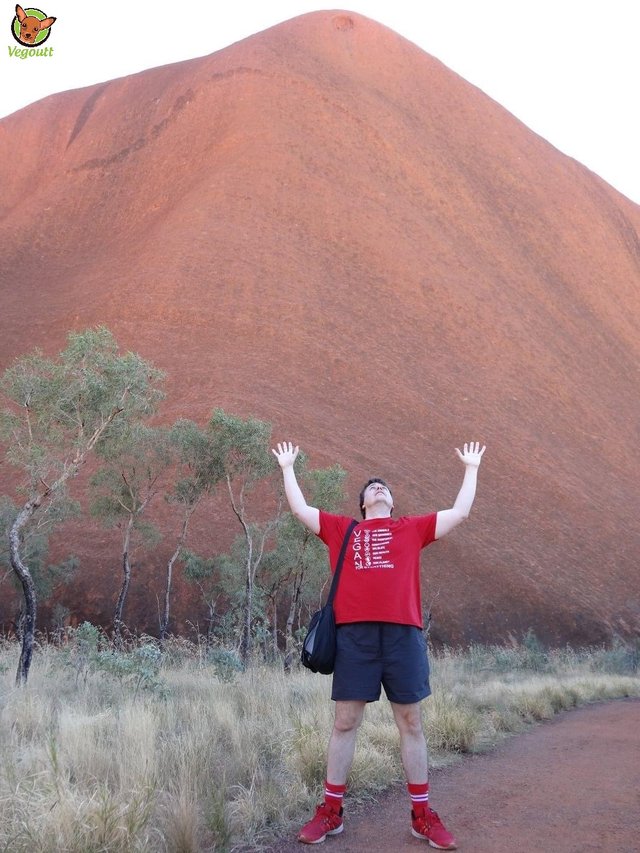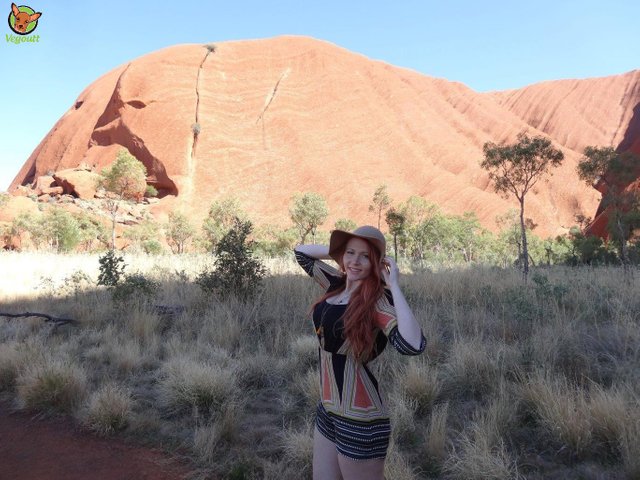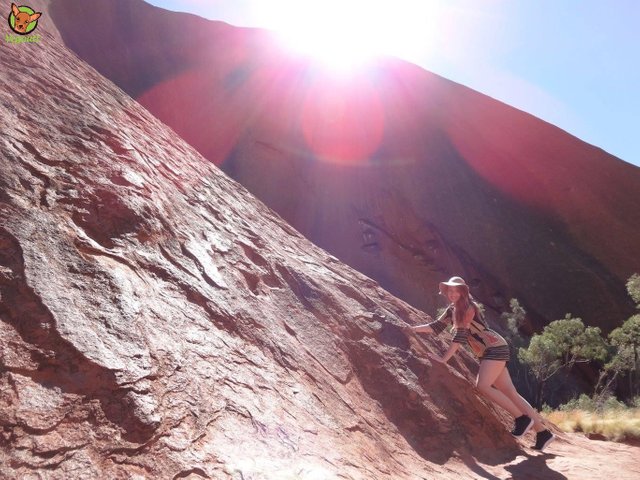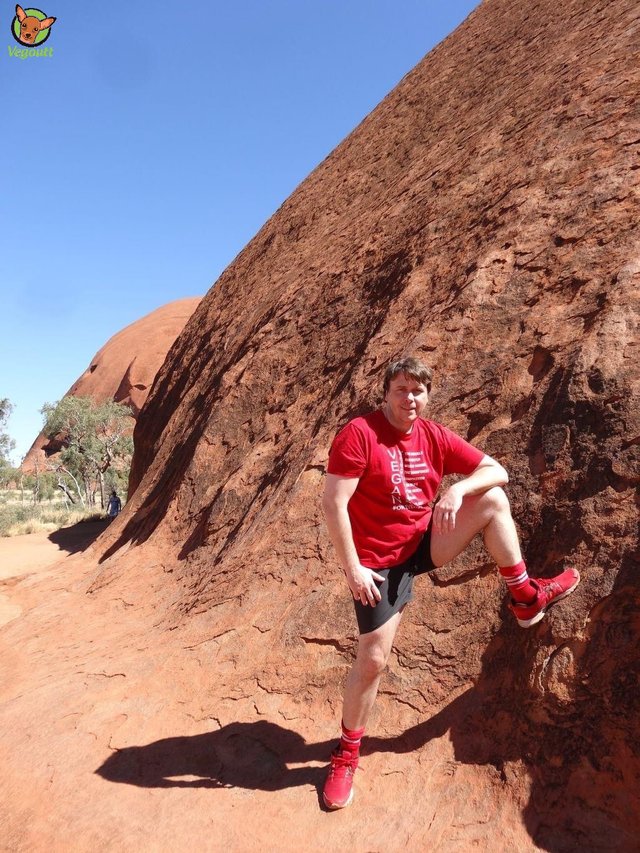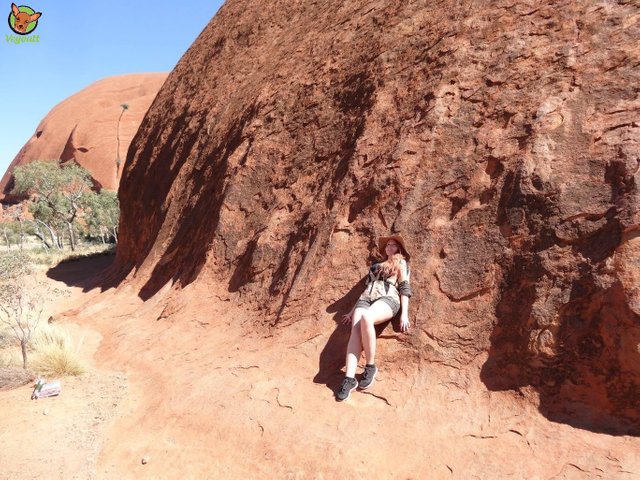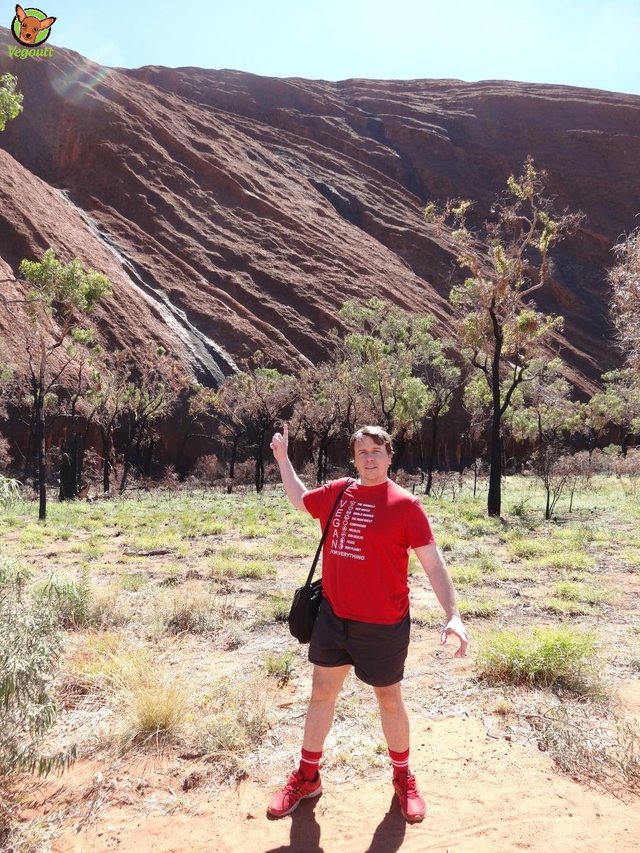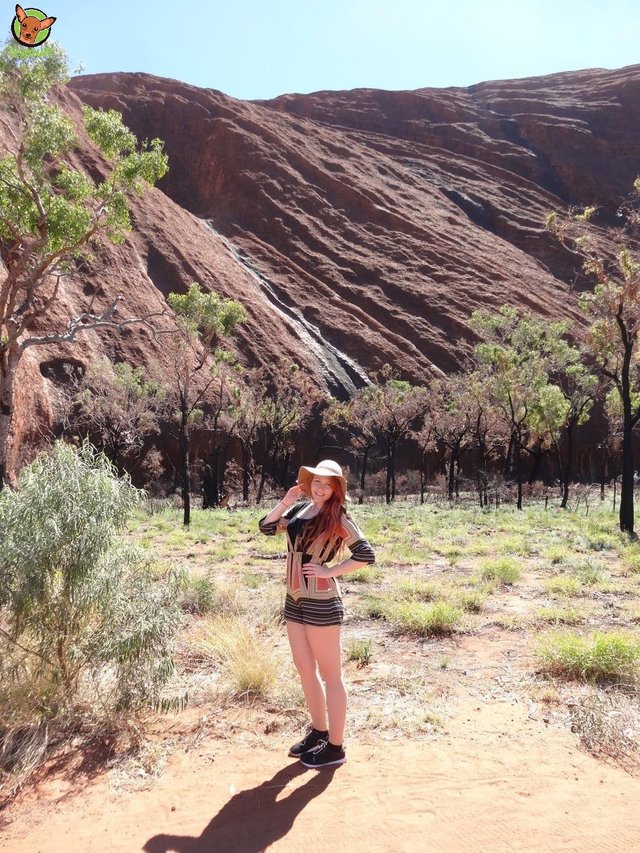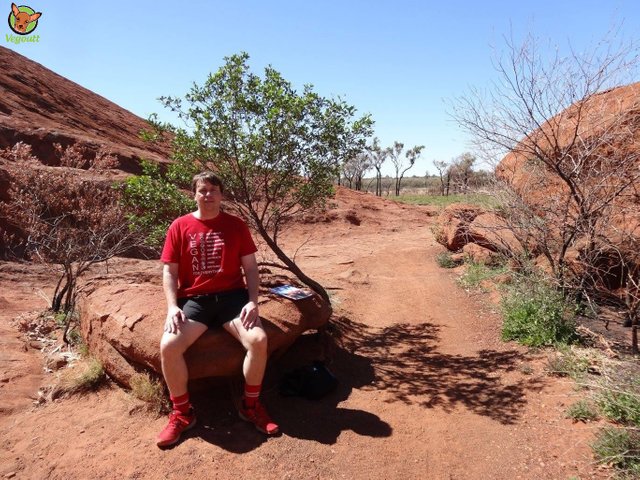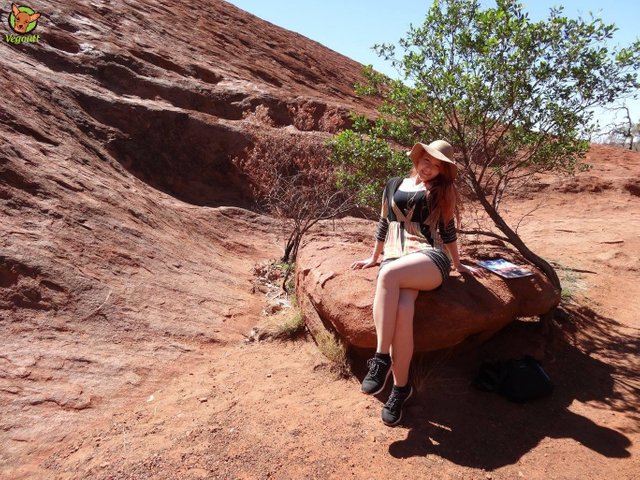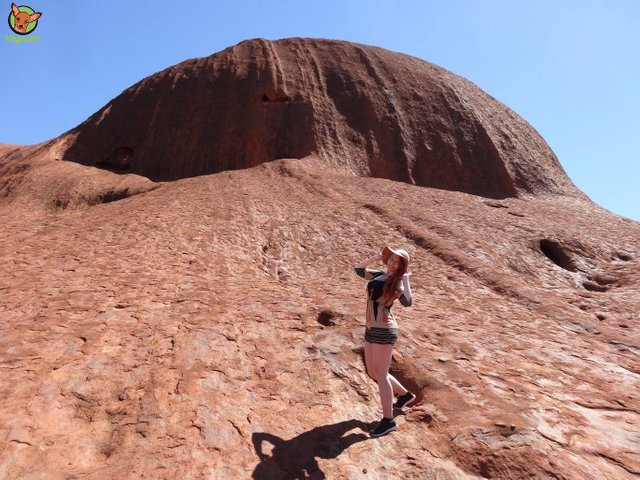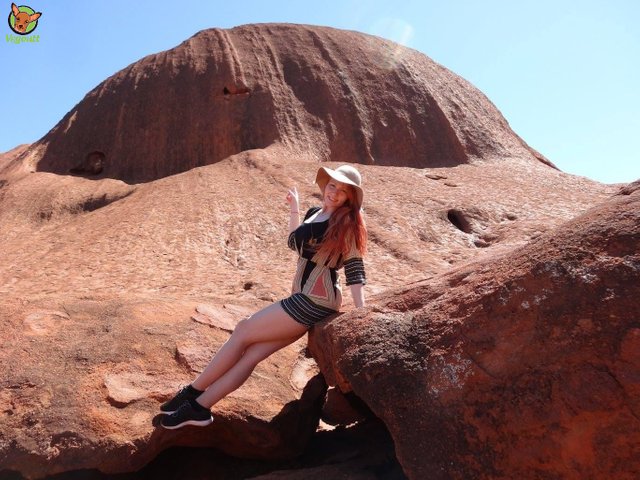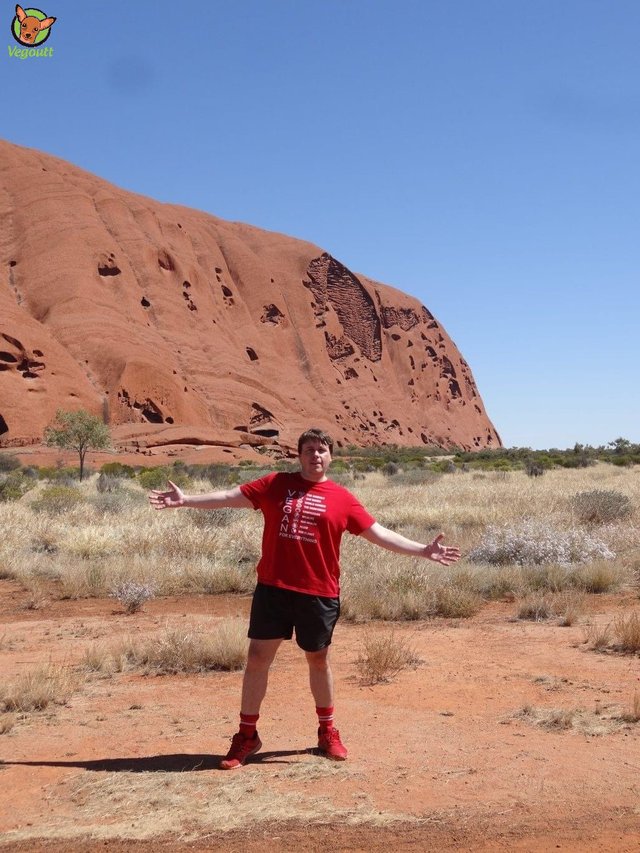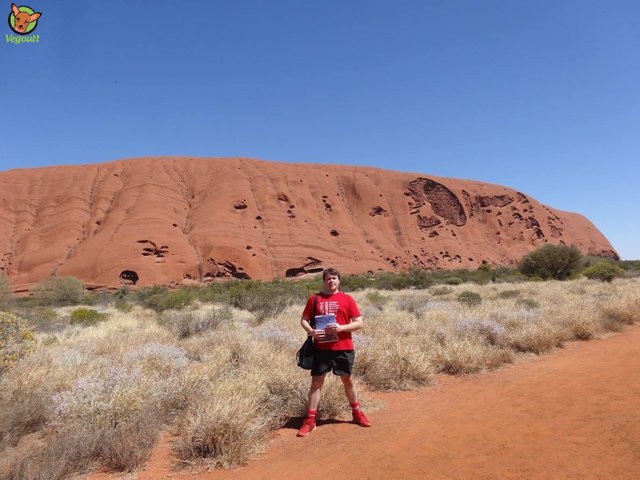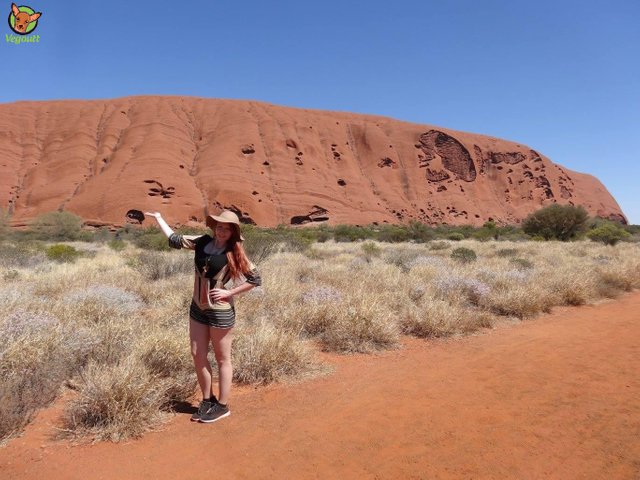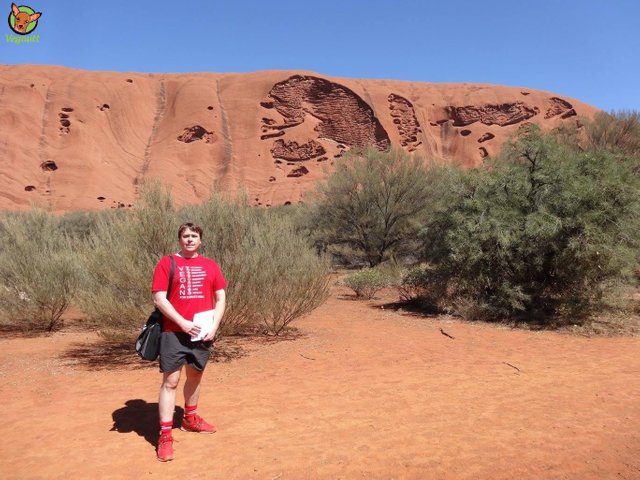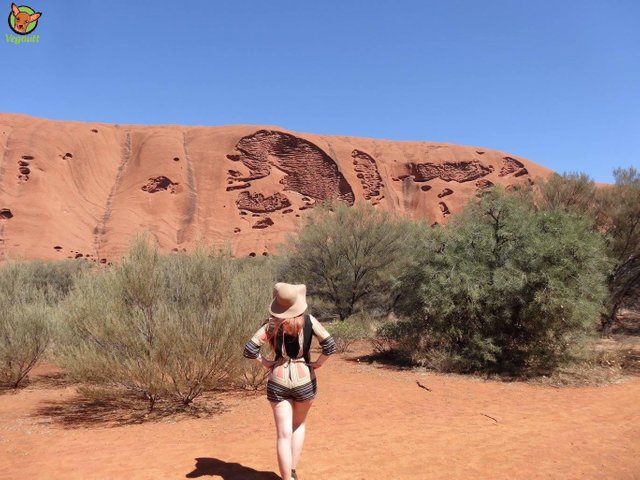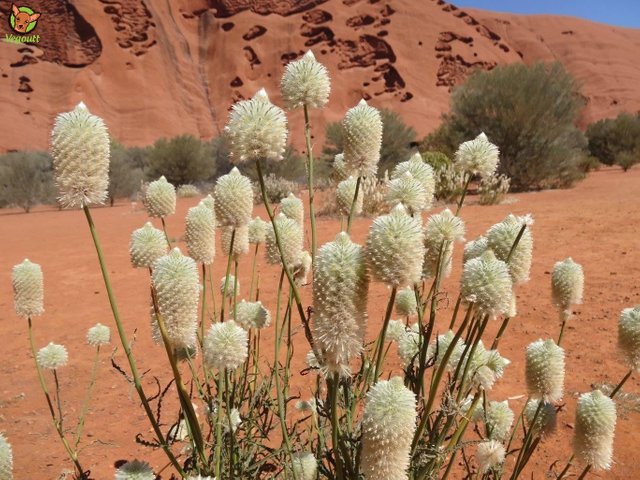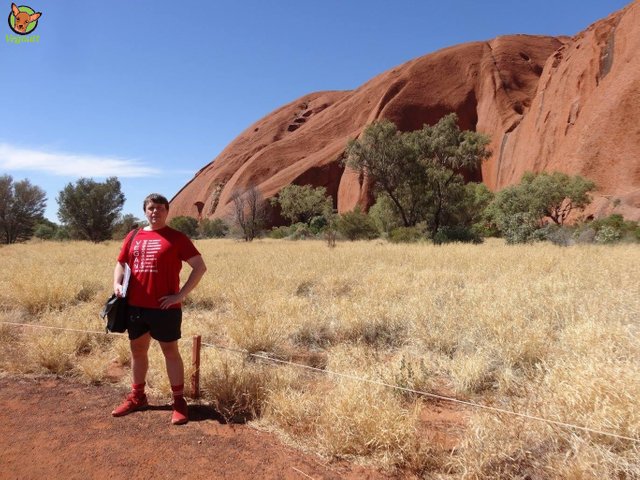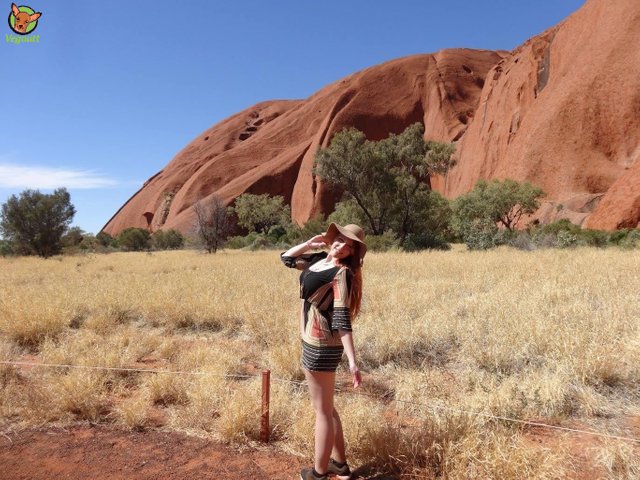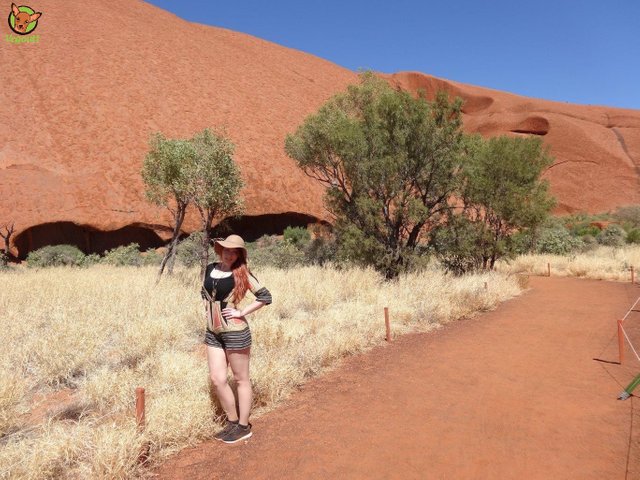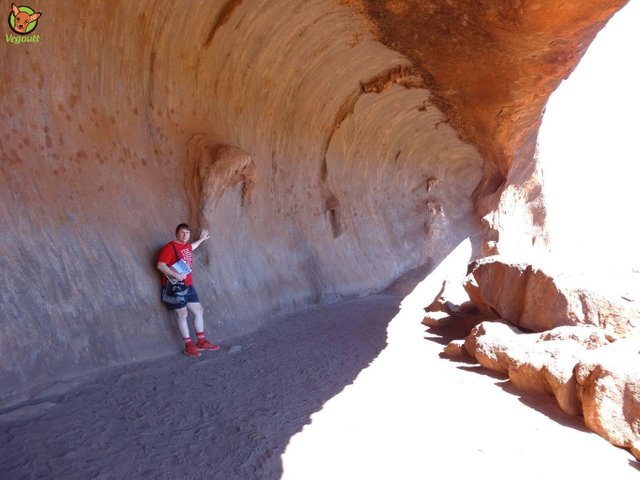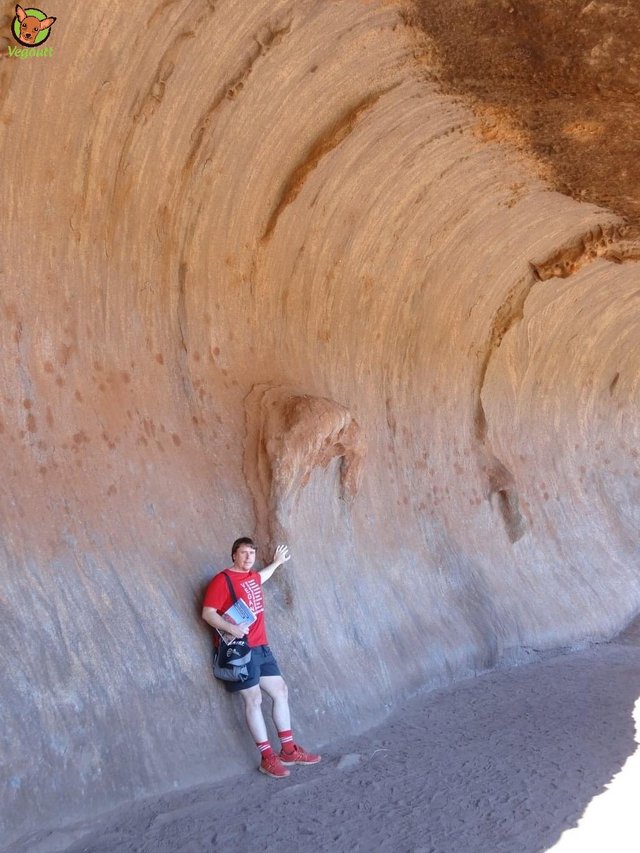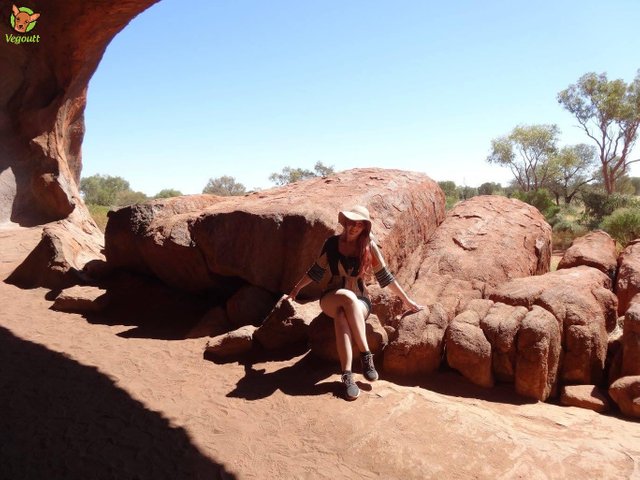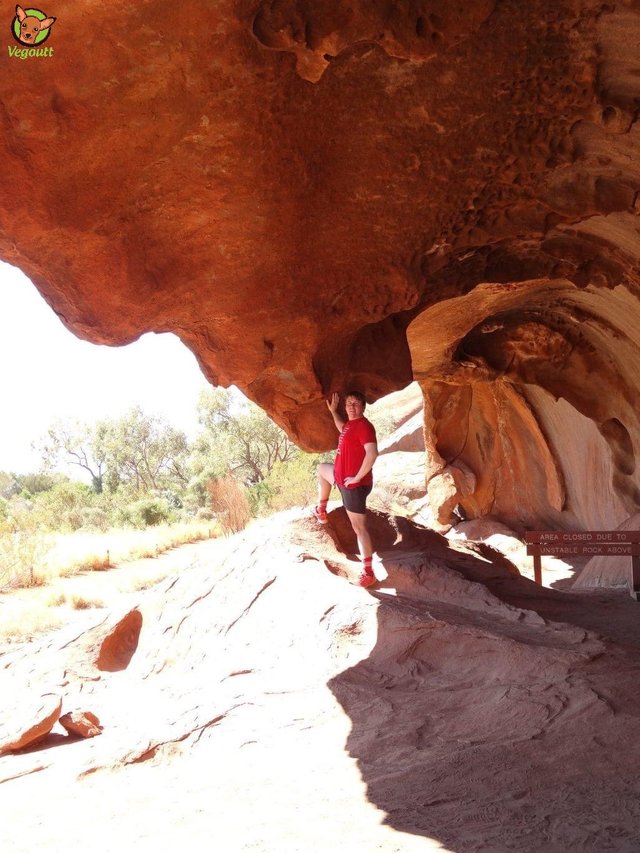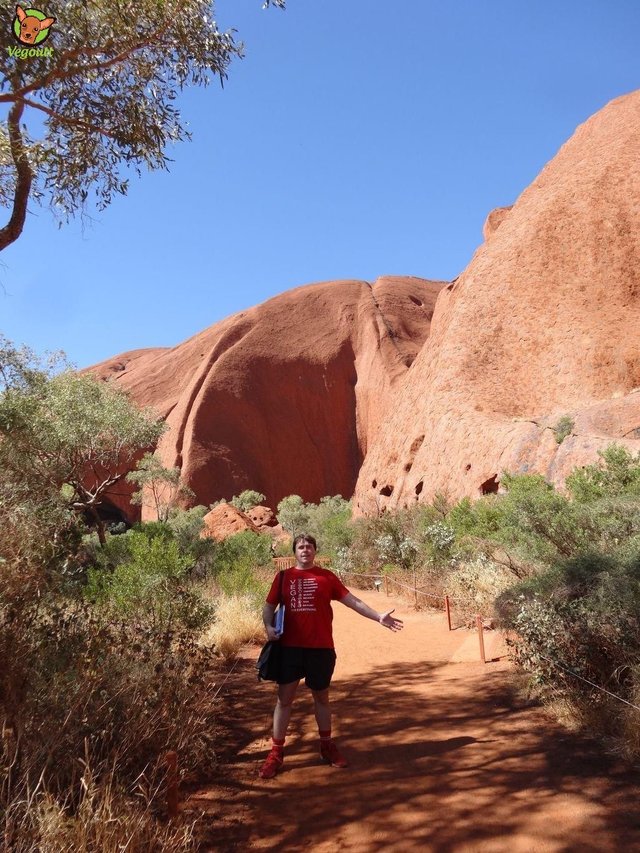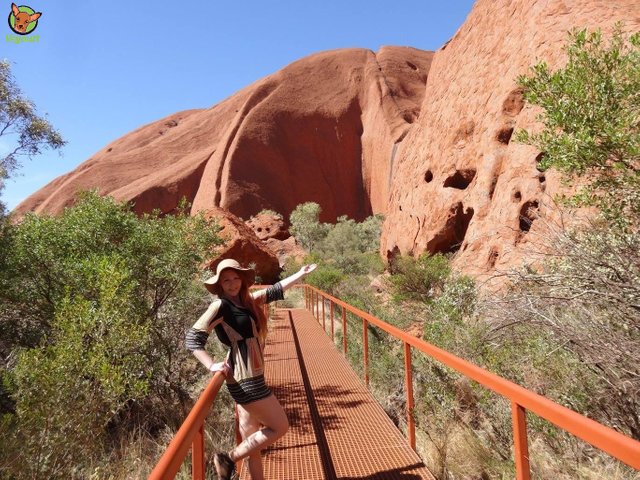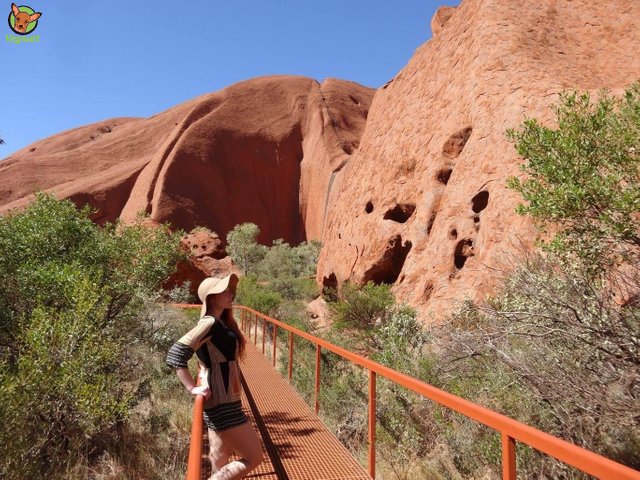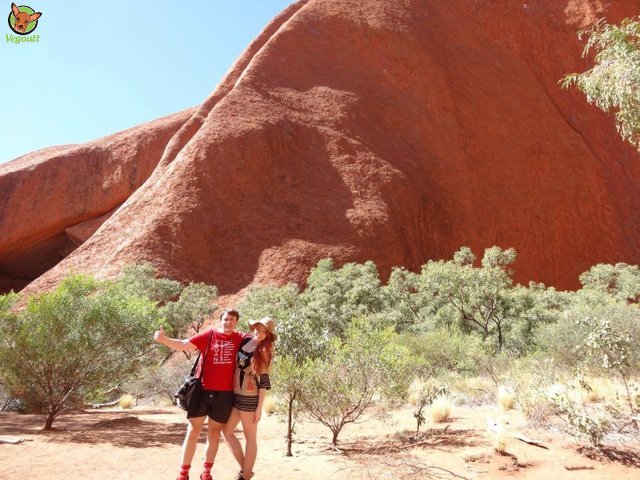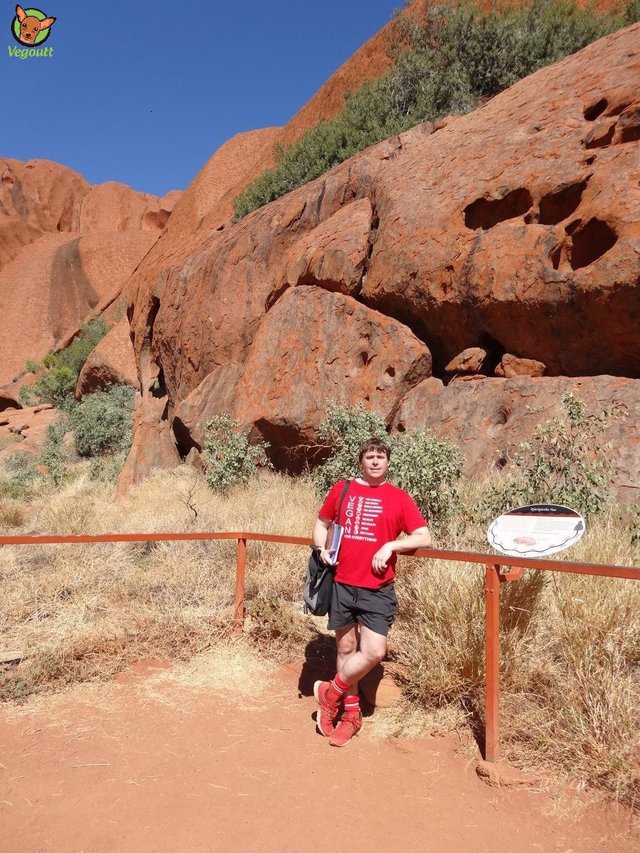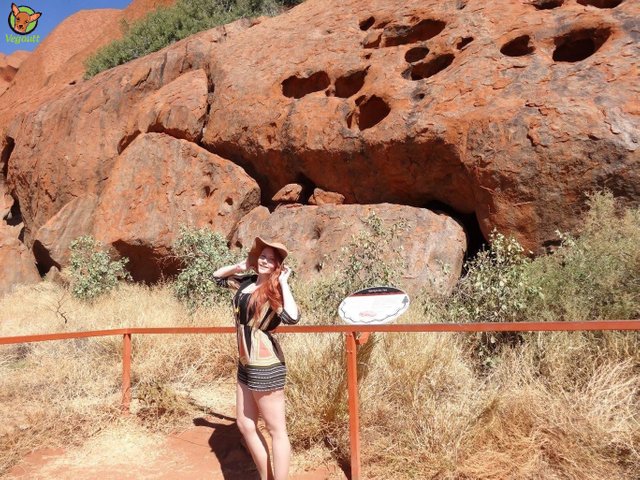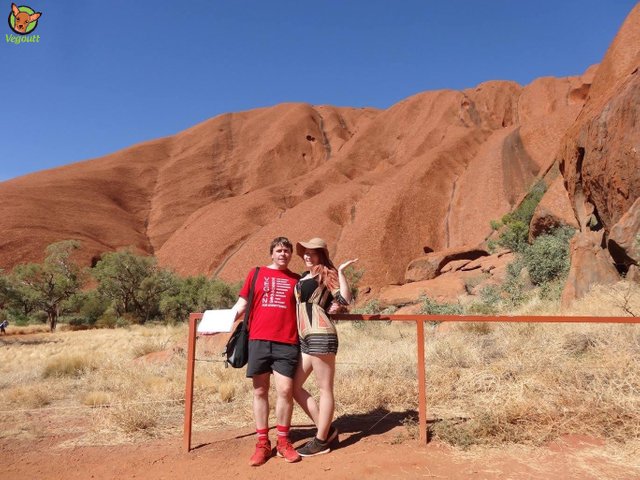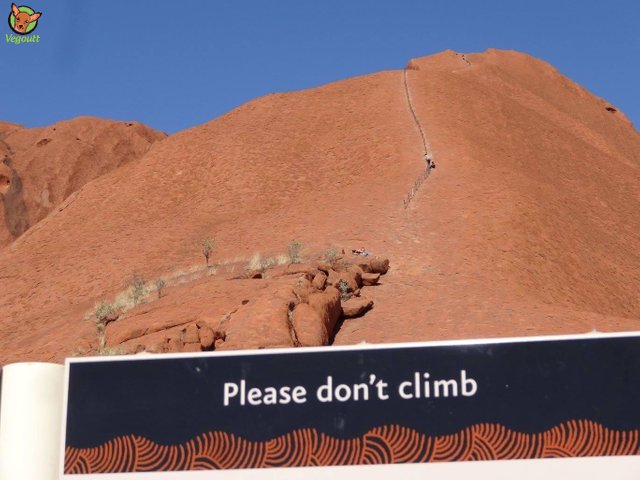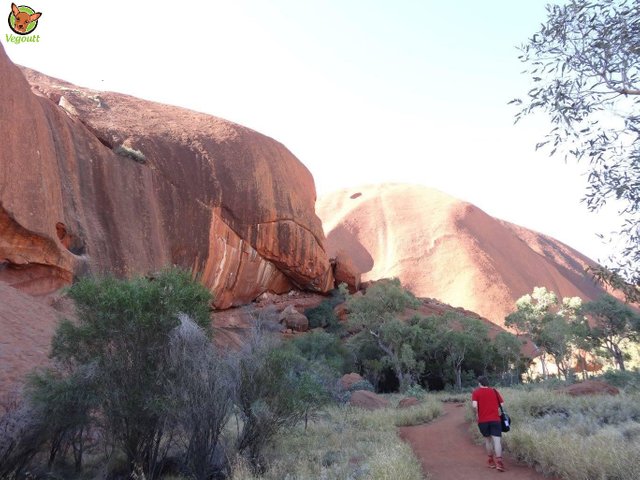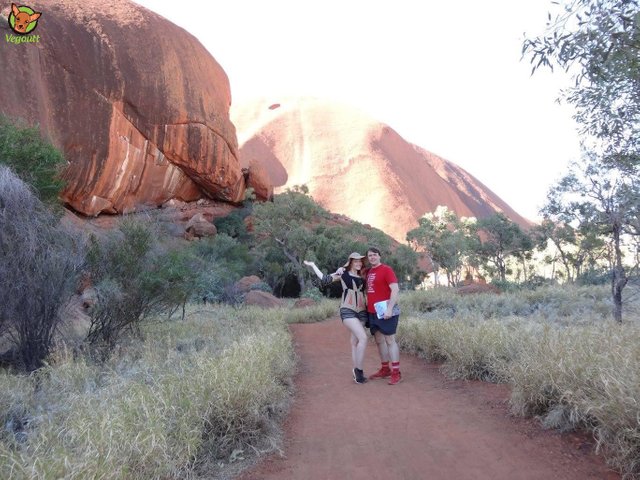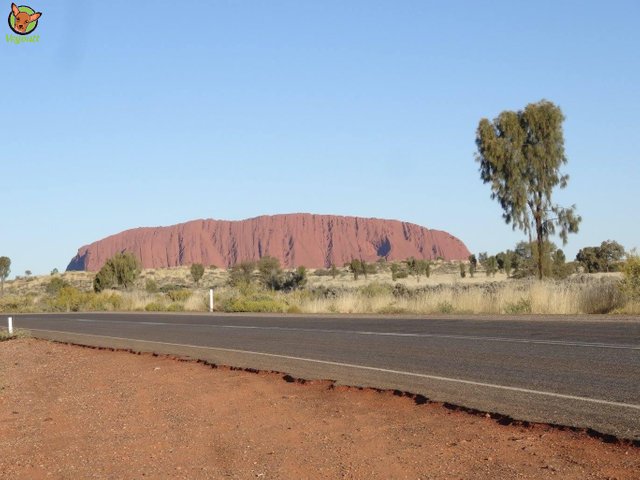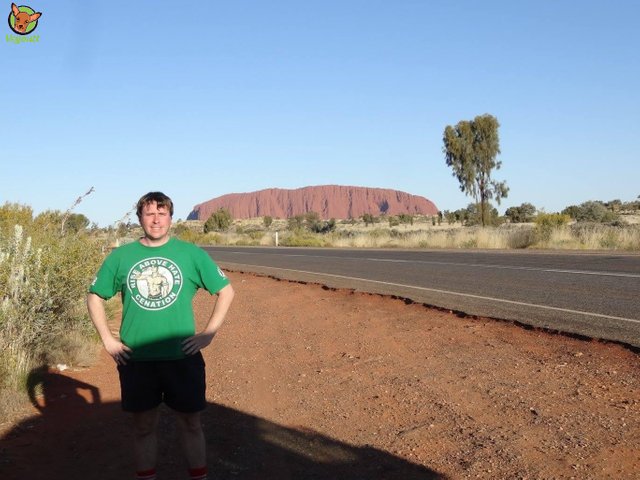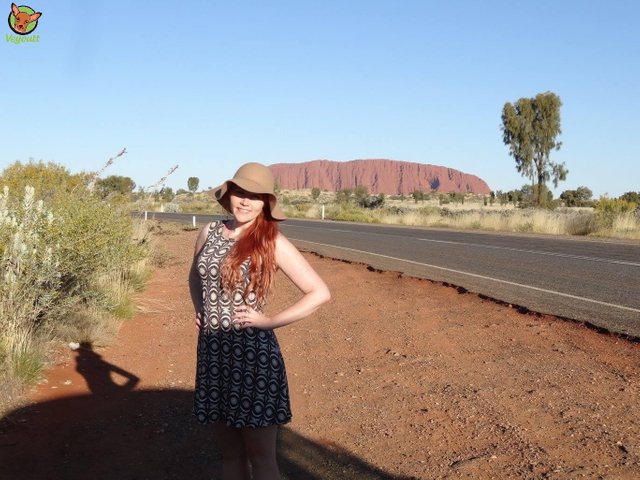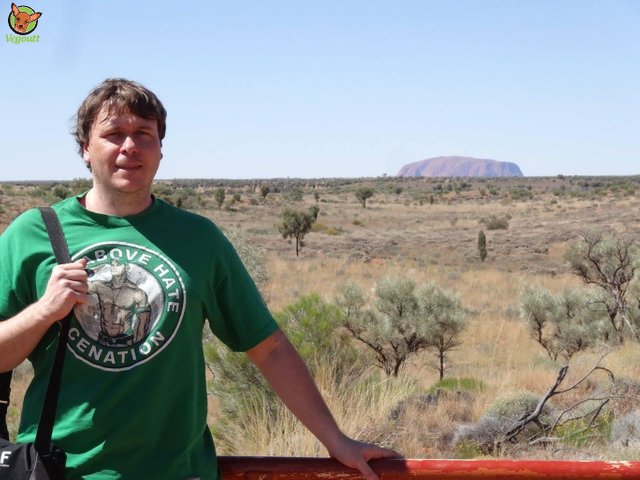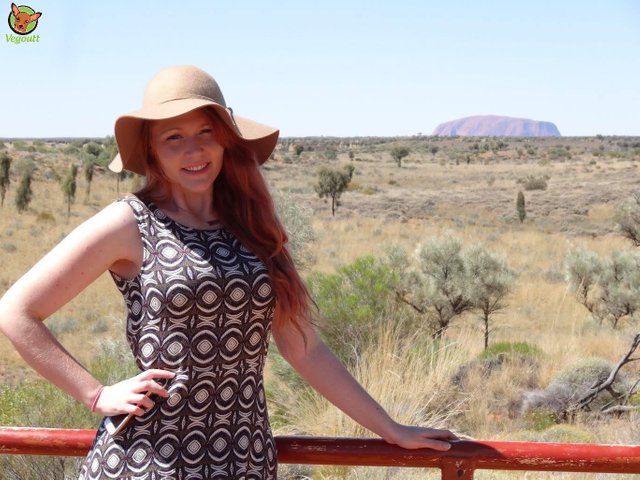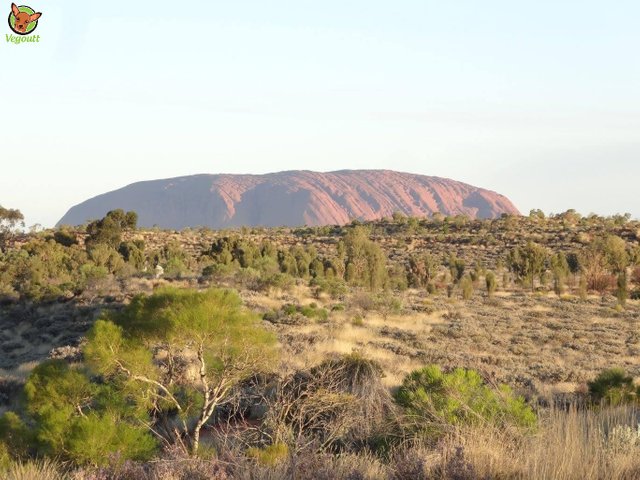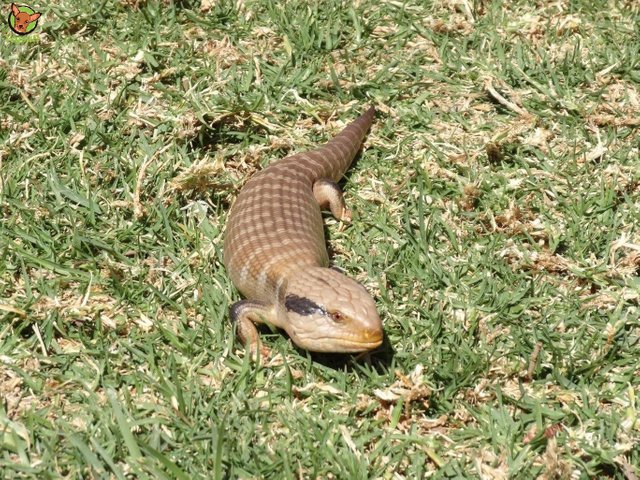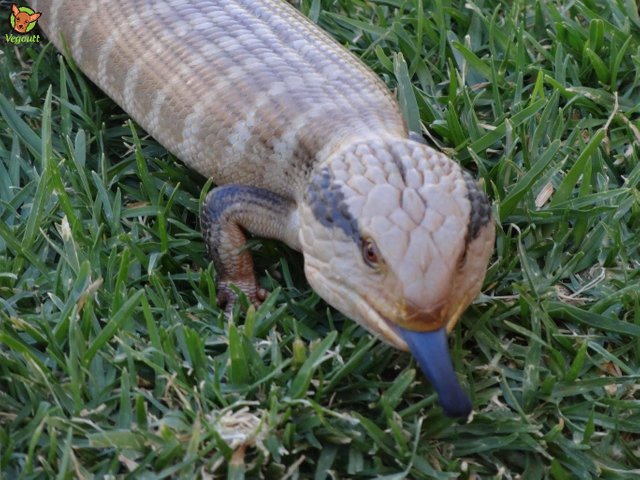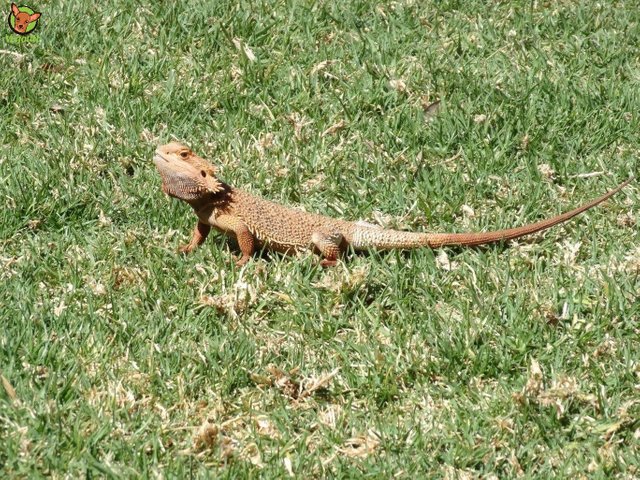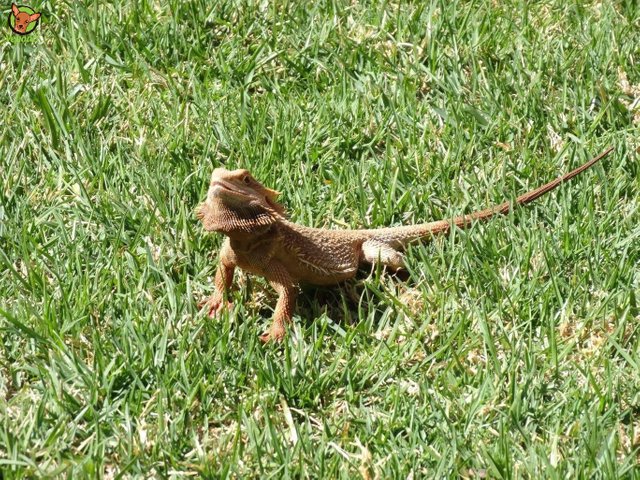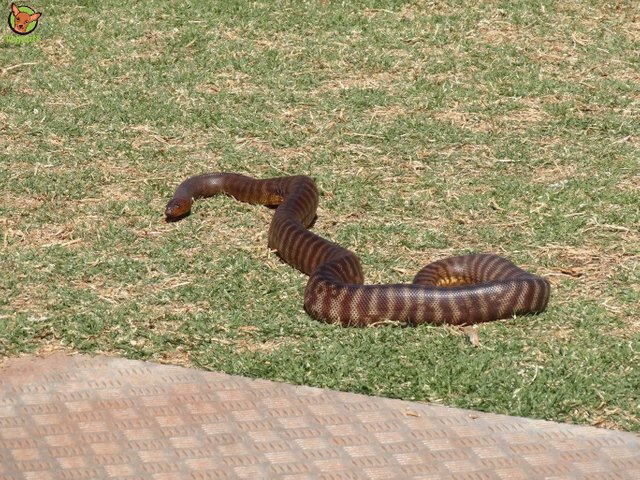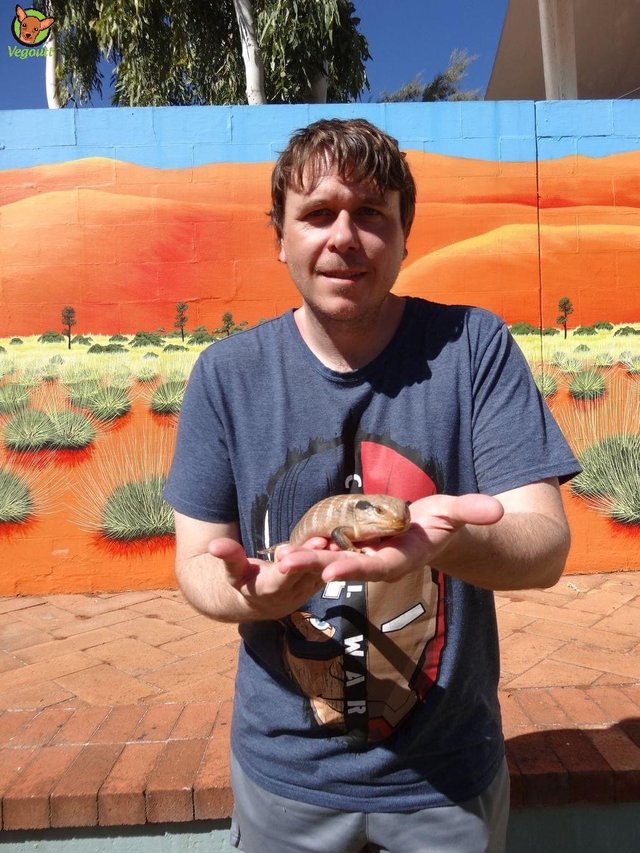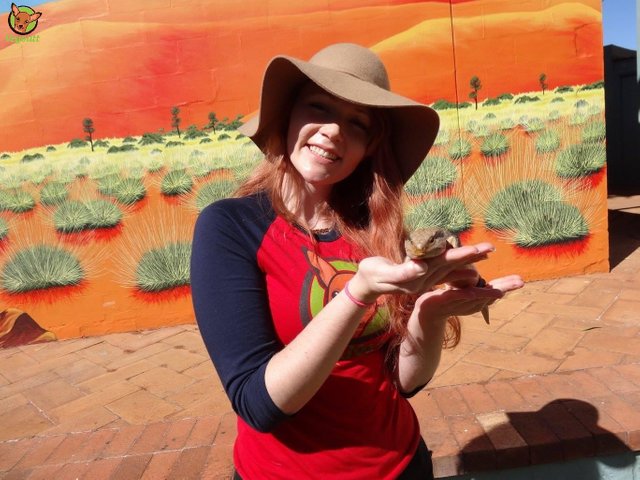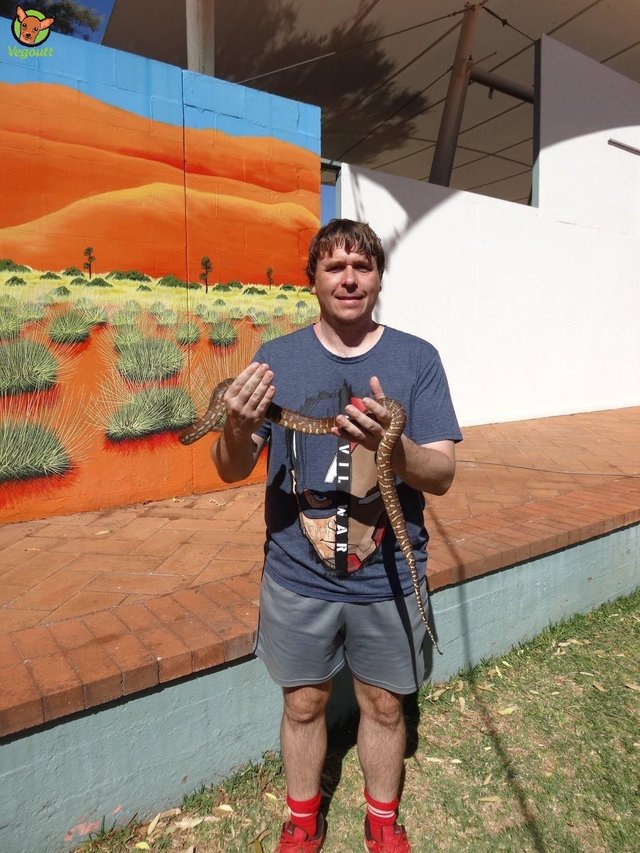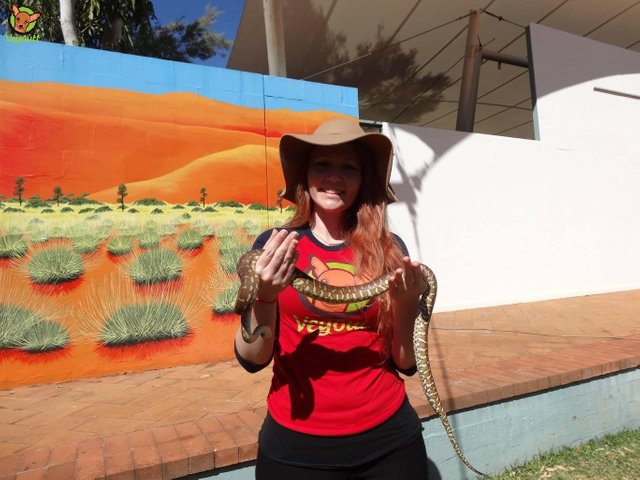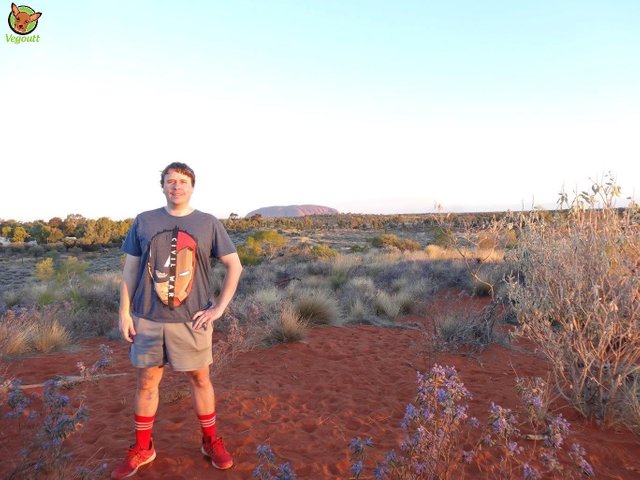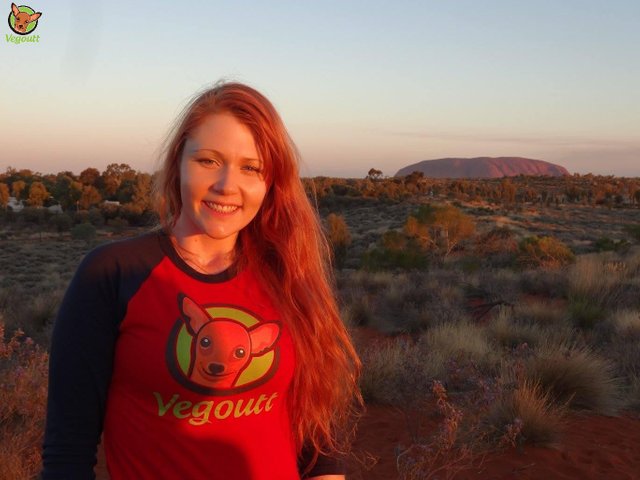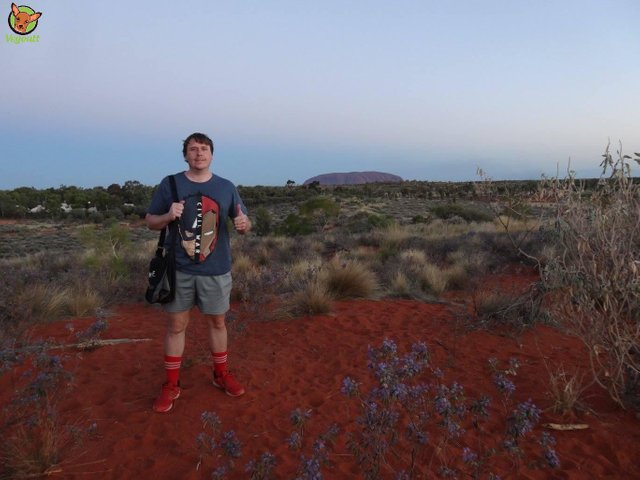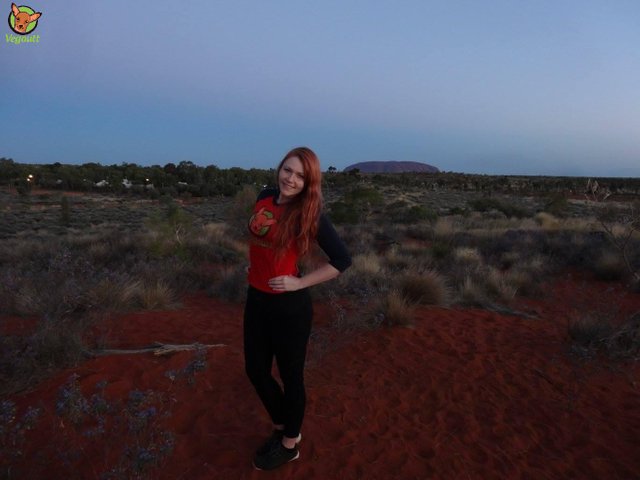Uluru, Ayers Rock, Australia - Travel #71
Dear friends, let me take you on the second part of my spiritual journey into the heart of the Australian outback, Uluru also known as Ayers Rock. In my previous blog, I spoke about my journey to the red centre and my trip to Kata Tjuta. You can read it here: https: Kata Tjuta, Australia's Red Centre- Travel #70 Uluru is one of the seven natural wonders of the world and when you visit the enormous rock formation, it isn't hard to understand why. I was fortunate enough to live in the beautiful country of Australia for 14 years. The landscape is so vast from the tropical rainforests of Cairns, snowy mountains of Canberra to the baron desert of the outback. Uluru is sacred to the Yankunytjatjara and Pitjantjatjara people. They are among different tribes of Aboriginals that believe that the large rock was formed during their ancestors dreamtime. I will refer to the rock only as Uluru during my blogs as I respect the native name given to it rather than the later formed English name. Uluru is not just a rock, it is a living cultural landscape that of which is believed to be home to the spirits of the ancestors. This makes this land hold incredible significance in Aboriginal culture and identity.
To find me, look for my Chihuahua's face
One of the first things I noticed when I landed in the outback was the amount of yellow flowers there were. The striking beauty of the yellow flowers just popped against the red dirt backdrop. The outback is home to hundreds of different plant species, of them, more than 20 are yellow. All of these native plants are incredibly resilient to the unrelenting dry sweltering heat and minimal rainfall. I mean, the heat in the outback can reach as high as 50.7 degrees Celsius/123 Fahrenheit and only have as little as 180 mm/7 inches of rain per year. I cannot even begin to imagine what it's like for the native animals. However, just as the plants survive even thrive, so do many outback animals. Major Mitchell's cockatoo also known as the pink cockatoo can be seen in flocks inhabiting every corner of Australia including the unforgiving red centre.
"This makes this land hold incredible significance in Aboriginal culture and identity."
SENNA Oligophylla - Outback Cassia
Major Mitchell's cockatoo
My shadow in the red dirt
Ayers Rock Resort making use of all that sun
My brother and I stayed at the Ayers Rock Resort. This massive complex of varying accommodations is the only option for a place to stay near the rock formations. The resort itself offers different tours which you can book at the tours desk. We wanted to take our time exploring both Uluru and Kata Tjuta and opted for the hop on/hop off two day national park pass. This allowed us to dedicate a full day each to Uluru and kata Tjuta. Some people do try to see both in one day, I mean, you can definitely "see" both in one day but you wouldn't be able to experience them. I highly recommend dedicating a day to experience Uluru and I mean a full 8-10 hour day. The best time of year to visit would be in August, I planned our trip months in advance to ensure we could secure our accommodation in August.
As Australia is in the southern-hemisphere, August is the end of their winter. It is very important to pack at least 2 liters of drinking water for each person. There aren't any souvenir stands or food and drink outlets. You are literally out in the middle of the desert. Walking around the entire base of Uluru is your best opportunity to connect with the rock and discover its fascinating history. There are dreamtime paintings to be seen and interpreted. The base walk is approximately 10 kilometers/6.2 miles around. You can do the entire walk as my brother Wayne and I did. Dependent upon both the weather and your fitness level, you can opt to do just a portion. The shuttle bus does have several stops along the circumference of the rock base. The trail around is completely flat which does in fact make it wheelchair accessible unlike Kata Tjuta.
Uluru/Kata Tjuta hop on, hop off bus
On the bus
"Walking around the entire base of Uluru is your best opportunity to connect with the rock and discover its fascinating history."
Uluru is situated about 25 kilometers/15.5 miles from Ayers Rock Resort and takes about 25 minutes by shuttle bus. This gives you plenty of time to do some reading on the land's geology. I am completely fascinated by the landscapes and history of formations. As beautiful as the stories of the Aboriginal ancestors are, I also like to take in the scientific discoveries. Of course, always respecting the culture of the Aboriginal people. I hope to some day soon start my Bachelor's in paleontology which has a large focus on geology. We packed two large bottles of water, raw vegan protein balls(video link to recipe below), camera, video camera, map, guide book, sunglasses, sun screen and hats. A big Australian sun safe campaign is, Slip, Slop, Slap which is slip on some sunglasses, slop on sunscreen and slap on a hat. Sun safety is incredibly important, everyday that Uluru welcomes visitors at least one person gets sun stroke. There is a depletion in the ozone layer above Australia making the sun particularly aggressive. Do make sure you have packed some Aloe-vera and after sun care as well.
Raw Vegan Protein Balls
I couldn't contain my excitement as the bus got closer
Uluru exclusive footage
I have a link just above to some exclusive footage my brother Wayne of Spectrumecons captured on his video camera. From a distance, Uluru appears to have a fairly uniform oblong shape. It is only once you get up close and personal with the rock that you realize it actually is very detailed and irregular. Most of the photos that I have seen of Uluru are from quite a fair distance away. So it is safe to say that I was pleasantly surprised at how intricate the rock formation turned out to be. This is the main reason why I suggest taking your time to explore Uluru. That way, you really get to appreciate it in all its beauty and form.
Uluru stands at an impressive 2,831 feet/ 863 metres above sea level. As impressive as that is to see, it actually spans much further beneath the desert plain adding to its massive size. In fact, just like an iceberg, there is much more mass below, there is another 8,202 feet/ 2,500 metres of rock spanning below the desert surface. This is where the native Aboriginal people believe that the souls of their ancestors reside. Geologist estimate that Uluru was formed about 500 million years ago, when the area was ocean. This was around the same time that the continent of Australia was formed. Sand and mud fell to the bottom covering the seafloor. The weight of the new seafloor turned it to rock. Kata Tjuta and Uluru were once, one giant formation. 100 millions years after the rock formed, the ocean disappeared. As the Earth's tectonic plates shifted, the rocks moved apart. Then over the past 300 million years, the softer rocks gradually eroded away, leaving behind the incredible formations that is present day Uluru and Kata Tjuta.
Uluru is taller than the Eiffel tower
"This is where the native Aboriginal people believe that the souls of their ancestors reside."
Although there aren't many benches along the base walk, there are lots of flat top rocks that you can sit on to get some rest. Even if you don't need a rest, it's nice to sit and take in the magical atmosphere of the place. I describe my journey to Uluru as spiritual. The reason behind this is that it is regarded by so many as a sacred site. So many people have come to this place to honour their relatives. The Aboriginals still to this day have a strong belief that their ancestors reside here. Making this a living rock. There is no other word for me to describe this place. I am not a religious person but I do have a strong connection to mother nature. Both Uluru and Kata Tjuta are marvels of the natural world.
Getting a sense of the sheer size of the rock
.gif)
Desert flowers
" Both Uluru and Kata-Tjuta are marvels of the natural world."
The Australian Aboriginals are the oldest living civilization on Earth. An unprecedented DNA study has uncovered evidence of a single human migration out of Africa. This confirms that Aboriginal Australians are the world's oldest civilization. The 2016 published paper by the University of Cambridge in England is the first extensive DNA study of Aboriginal Australians. This is an absolutely ground-breaking discovery. It is such a shame that Australians today treat the Aboriginal people so poorly. They are treated badly not only by the Australian public but by the Australian government as well. It is long over-due for these incredibly resilient people to get the respect they deserve. As we walked around the base of Uluru, we came across several caves. These caves varied in size and were once home to Aboriginal tribes. Today, it is home to many native animals as they take shelter from the sun.
" It is long over-due for these incredibly resilient people to get the respect they deserve."
Whenever we travel to another country or immerse ourselves into a different culture. It is so important that we take their customs and traditions seriously. The native Aboriginals as I have mentioned many times consider Uluru as a sacred place. There is a sign that states "Do not climb" in front of a section of rock that has climbing ropes in place. But why are there climbing ropes there if I am not meant to climb it you may be thinking? The answer is, the climbing ropes are there for young adolescent men embarking on their walkabout journey. It is a very important part of their ritual. It isn't for tourists to climb. A walkabout is when a young Aboriginal man ventures the outback on his own. He leaves his tribe a boy and returns a man. It is a tradition still practiced to this day. Unfortunately, tourists can be ignorant and just climb it anyway. Many celebrities and even members of the British Royal family have climbed the rock. Rules and traditions don't seem to apply to the rich and famous. Of course, Wayne and I respected the law of the natives and did not climb Uluru.
Do not climb
On our last full day in the red centre, we decided to meet the animals that call the outback home. One of the major attractions here in the outback is camels rides. Wayne and I are both animal rights advocates and wanted to go to the local camel ranch. This is an outback ranch that supplies the camels for the rides. We were disappointed with the care of the camels and would not partake in riding them. We decided to go to the reptile rehabilitation centre instead. This was a wonderful facility that educate and rehabilitate. There are a lot of misconceptions and unfounded fears of a lot of reptiles. Yes, Australia is home to some of the world's deadliest reptiles. But before going on a trip to the outback, I encourage you to do some homework on the reptiles that you might encounter while here. Reptiles are an integral part of the eco-system and how plants and other animals survive this baron land. A lot of the reptiles that are taken into the rehabilitation facility have been deliberately hurt by humans out of fear. This reptile centre puts on an educational presentation twice daily so that you can get up close and personal with some of the creatures that call the outback home.
Meeting the animals that call the outback home
"Reptiles are an integral part of the eco-system and how plants and other animals survive this baron land."
Many of you would have heard of Uluru, but how many of you have heard about how it changes colour? The sheer size of the rock will impress you but it is sunset and sunrise that will absolutely take your breath away. As the sun begins to rise, the rock turns from a dull grey to a light purple. Then as the sun reaches its peak in the sky, the rock glows reddish golden, it will remain that colour till night fall. As the sun begins to set, the colour of the rock fades from reddish golden to a dusty pink. This was one of the experiences I was most looking forward to. I couldn't wait to witness the magnificent colour change right before my eyes. It absolutely did not disappoint. Nature is beautiful and it really puts on a show every morning and night. What more could you want out of a trip? This journey was a must-do, once in a lifetime journey that I hope everyone gets to experience.
The changing colours of Uluru
"This journey was a must-do, once in a lifetime journey that I hope everyone gets to experience."
I hope you have enjoyed my blog on Uluru, Ayers Rock, Australia, thank you for reading, I look forward to sharing more adventures with you, until next time, Vegoutt Everybody!
